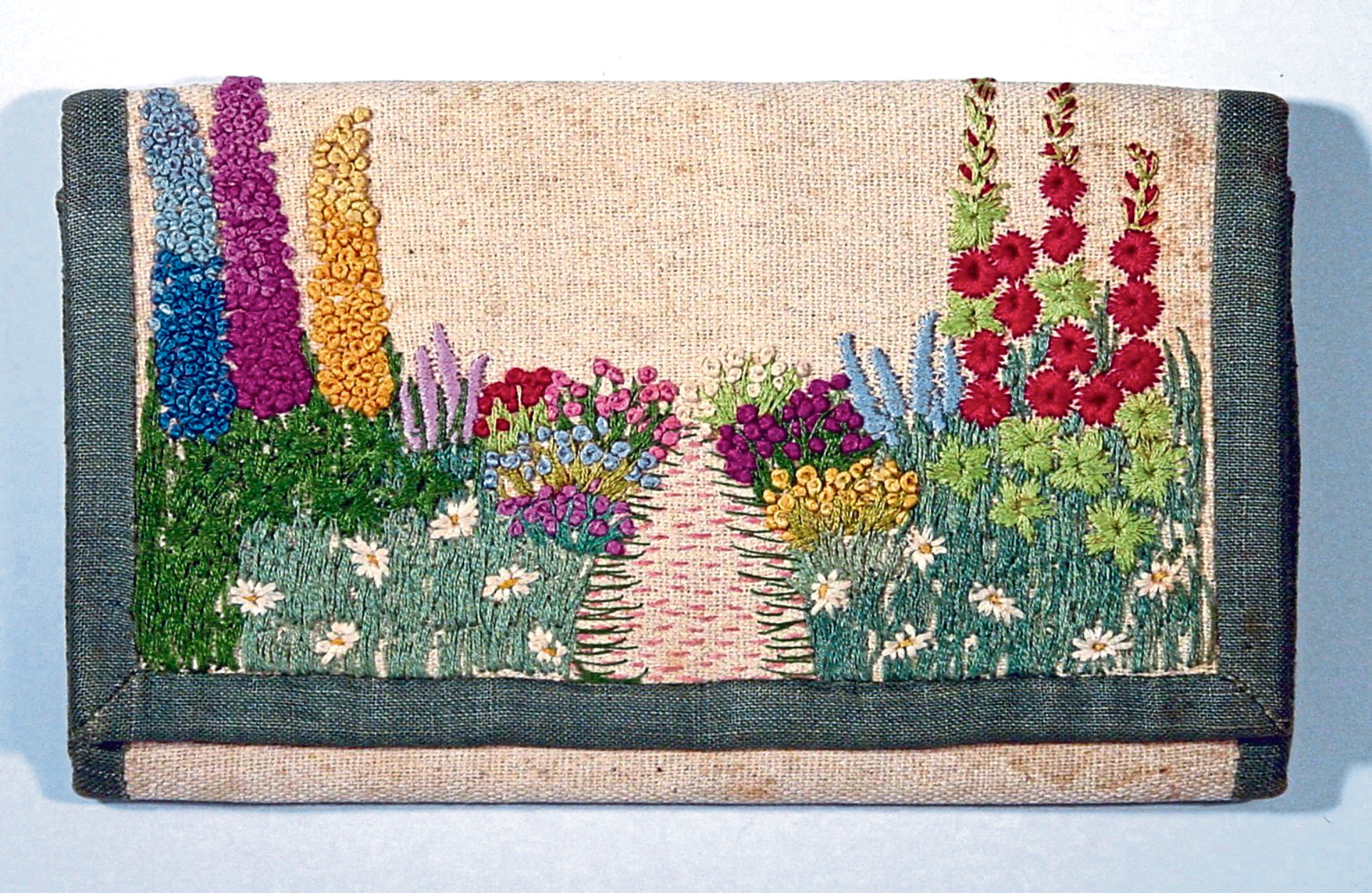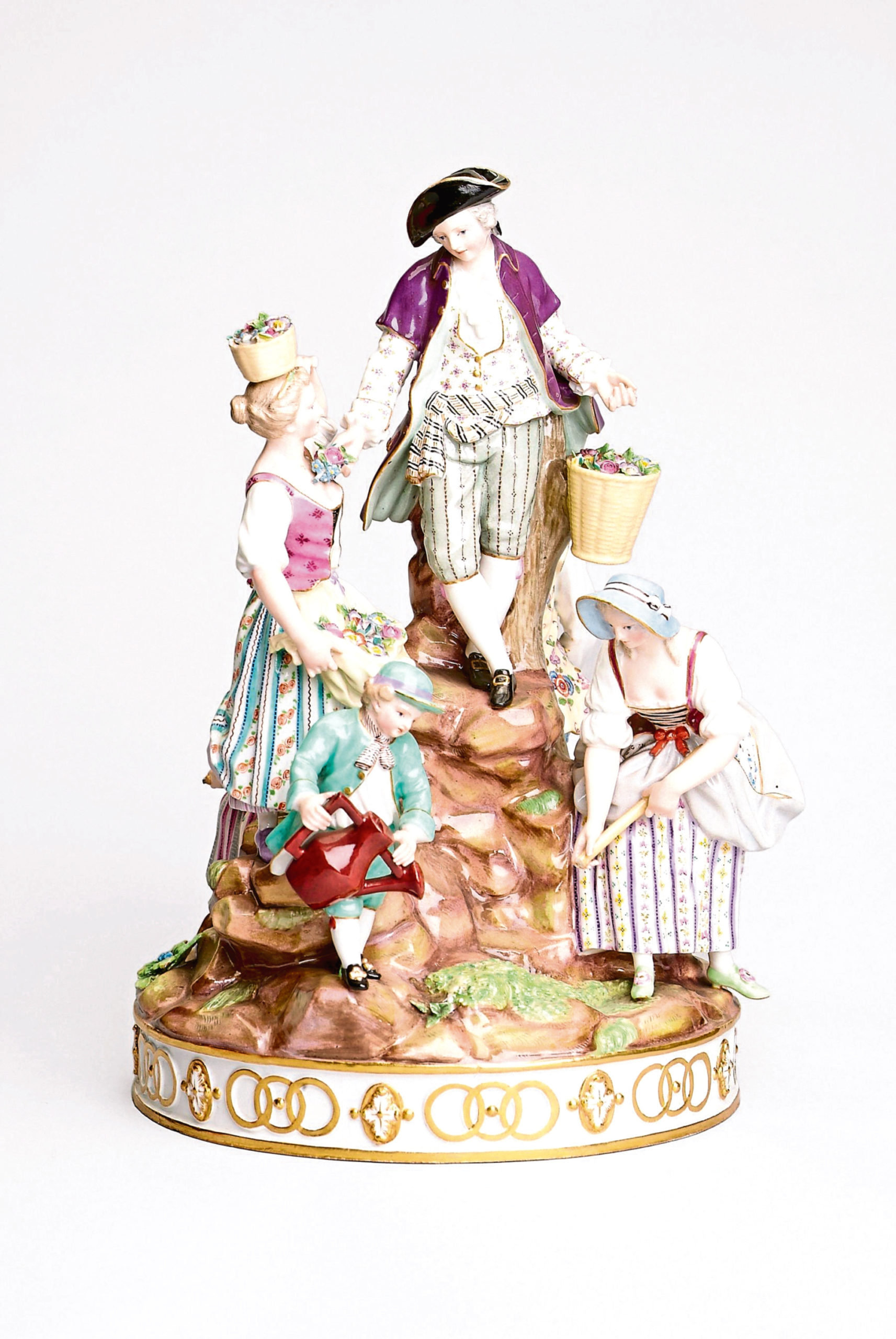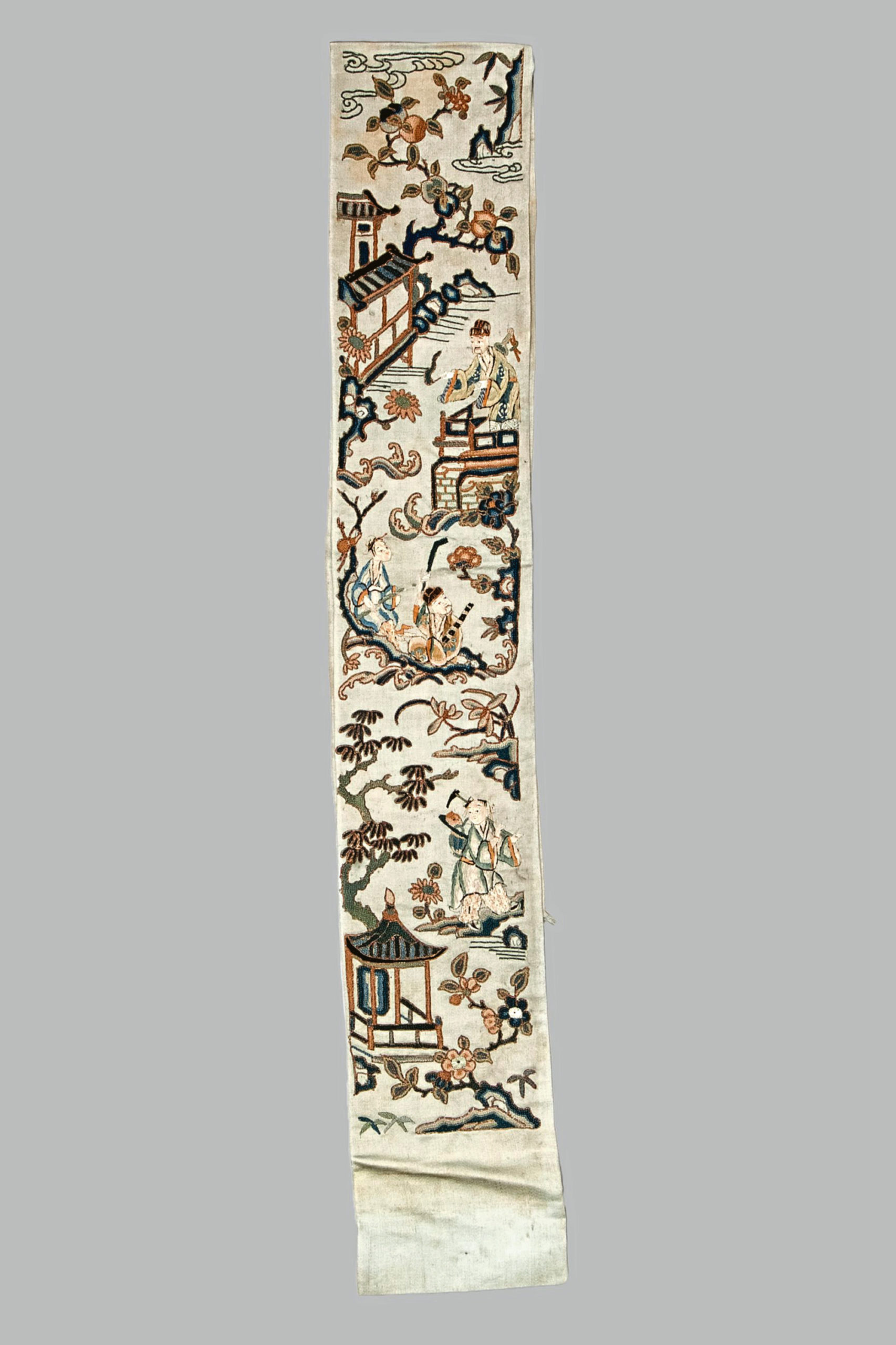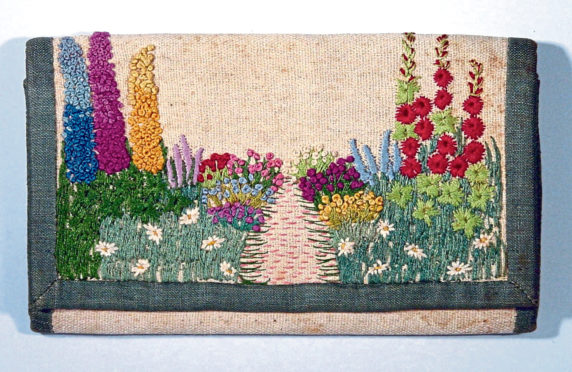As the weather gradually improves, many of us will be thinking of exercising our green fingers once again and getting active in the garden.
Gardening has increased in popularity during the pandemic and can be very beneficial for physical and mental health. Spending time in nature is therapeutic and concentrating on planting seeds or simply hoeing a patch of ground can help us to switch off from our worries and anxieties.
Purse embroidered by Edith Green, 1920s

Garden scenes are a popular design in embroidery. This purse has been decorated with a garden path surrounded by brightly- coloured flowers. The flowers have been stitched in enough detail to identify them and include hollyhocks and daisies.
The Gardeners, Meissen, 18th Century

In 1921, the advocate Alexander Webster of Edgehill bequeathed his collection of pictures and porcelain to Aberdeen Art Gallery. Many of the items had been collected by his father, John Webster (1810-1891), who was lord provost of Aberdeen and a Liberal MP. This figure from his collection was made by Meissen, the first porcelain factory in Europe founded in 1710. It is decorated with figures engaged in gardening activities including hoeing and watering.
Garden pattern plate
The Garden pattern plate was designed by Eric Ravilious for Wedgwood in 1937 and produced in the 1950s. Artist Eric Ravilious was commissioned to design ceramics for Josiah Wedgwood and Sons in the 1930s. The nine designs in his Garden pattern were based upon drawings that Ravilious made of his wife and friends enjoying the garden of the Essex house that they shared with fellow artist Edward Bawden in the 1930s. This plate is decorated with a woman relaxing under a tree surrounded by birds, garden tools and a watering can.
You can see more pieces from the Garden pattern dinner service on display in Gallery 6 and Gallery 12 in Aberdeen Art Gallery.
Chinese sleeveband, Qing Dynasty, 19th Century

This silk sleeveband from a Chinese robe is decorated with a garden scene embroidered with silk and metallic threads. The peach and pine tree both symbolise longevity in Chinese culture.
